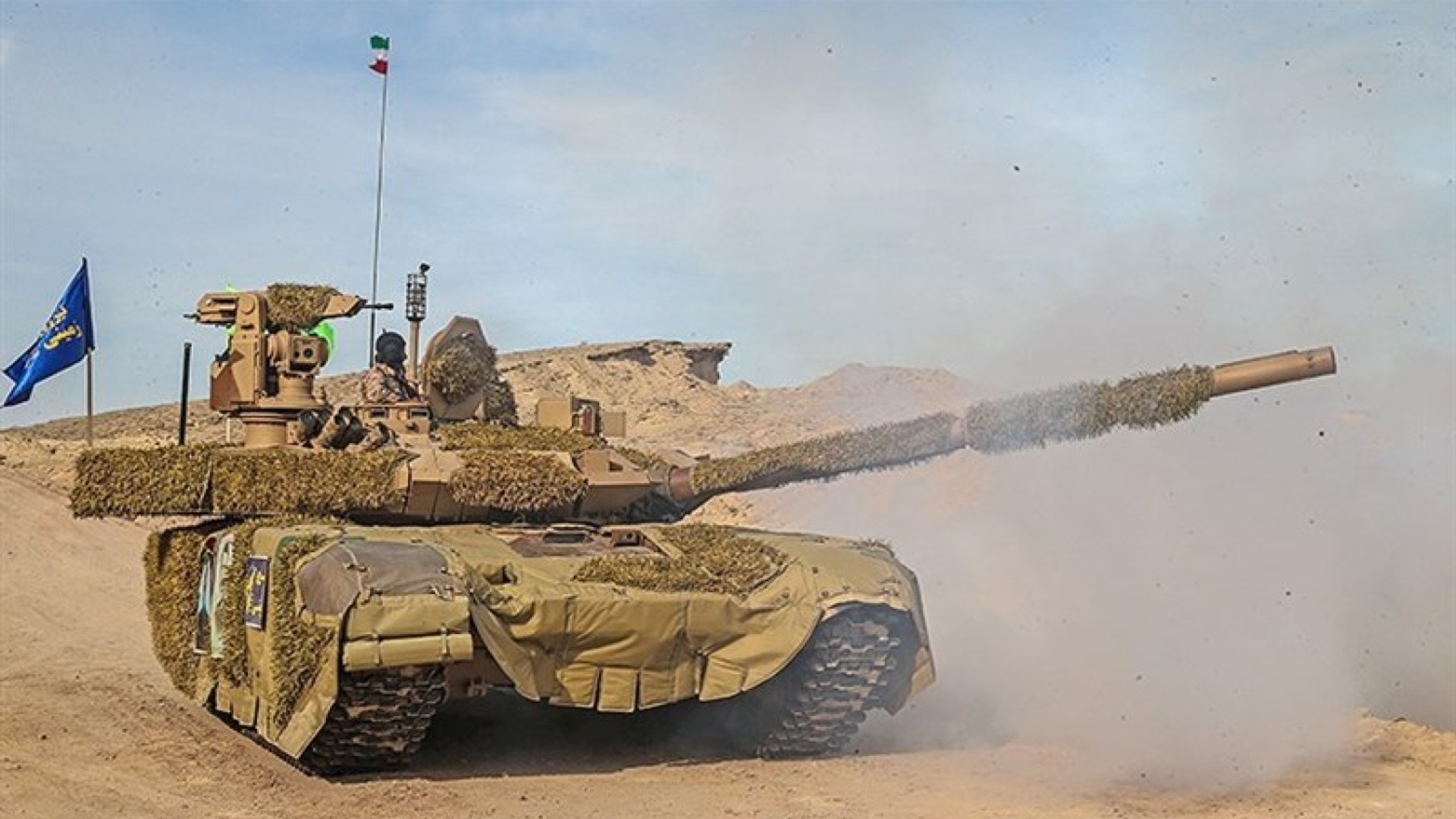Video: Iran Tests Out New Tank, Precision Combat Drones in ‘Great Prophet’ War Games
Subscribe
During multi-day war games across Iran, the Islamic Revolutionary Guard Corps (IRGC) has deployed several new weapons, including improved tanks and unmanned aerial vehicles (UAVs).
At the Payambar-e Azam 17 (The Great Prophet) war games in southern Iran on Wednesday, observers spotted a new type of tank being used. According to Iran’s Tasnim News Agency, the tank is called “Karrar,” and is an upgraded version of the Soviet-built T-72 main battle tank.
The Karrar itself isn’t new, but this is the first time it’s been seen used in mock combat, the agency noted. It employs a special camouflage system to protect it from thermal infrared radar detection and uses an advanced computer system to put its shells perfectly on target, including an electro-optical fire control system, laser rangefinders, and a ballistic computer.
The Iranian "Karrar" tank has come into service.
— Hassan Mafi (@thatdayin1992) December 22, 2021
Pictures of the Iranian Karrar main battle tank during the Great Prophet 17 military drills. pic.twitter.com/NLor22vnC4
The Islamic Revolution Guards Corps Ground Force has inducted into service a Karrar variant of the upgraded T-72 main battle tank, according to the Tasnim News Agency. pic.twitter.com/0gnWqjWy73
— IRIB INDONESIA (@Parstoday20211) December 22, 2021
The tank has a visual similarity to Russia’s T-90, which is also based on the T-72, but Moscow has denied any collaboration on the project.
“We were once interested in buying the Russian tanks. But since we can manufacture similar models within the country and we plan to do so in the near future, the deal is now off,” Iranian Brig. Gen. Ahmad Reza Pourdastan told reporters in 2016 after a deal to buy T-90s from Russia fell through.
"We are trying to develop the needed defensive capacities and capabilities in ourselves proper to the atmosphere of threats,” he added.
Indeed, Rear Adm. Alireza Tangsir told reporters on Tuesday that all weapons being used in the Payambar-e Azam 17 drills are “indigenous.”
Iran has long used other versions of the T-72, including the original export version of the T-72, dubbed “Shilden” in Iran, and the heavily upgraded Rakhsh.
The war games, being held in Hormozgan, Bushehr and Khuzestan, have rehearsed a variety of scenarios, including an air attack on the nuclear power station in Bushehr, built with help from Russia’s Ministry for Atomic Energy. Israel has threatened to attack Iranian nuclear facilities if talks to revive the 2015 nuclear deal with the US fall through; these are not the first air defense drills to be held by Iran in recent months, either.
The drills have also featured amphibious warfare tactics and an air cavalry assault, as well as tests both launching and fending off ballistic missile attacks.
IRGC Ground Force Commander Brig. Gen. Mohammad Pakpour also boasted on Wednesday about the precision of the elite armed forces branch, telling reporters: “Our assault and combat drones can target any spot deemed necessary, in a way that hitting and detonating any target has become possible with such a tool and after a process in which such aircraft have developed and been equipped.”
The drills saw Mohajer-6 drones deploy Qaem smart bombs “with pinpoint accuray,” Tasnim reported.
Pakpour added that the IRGC’s electronic warfare capabilities had improved both qualitatively and quantitatively, although he did not elaborate.

